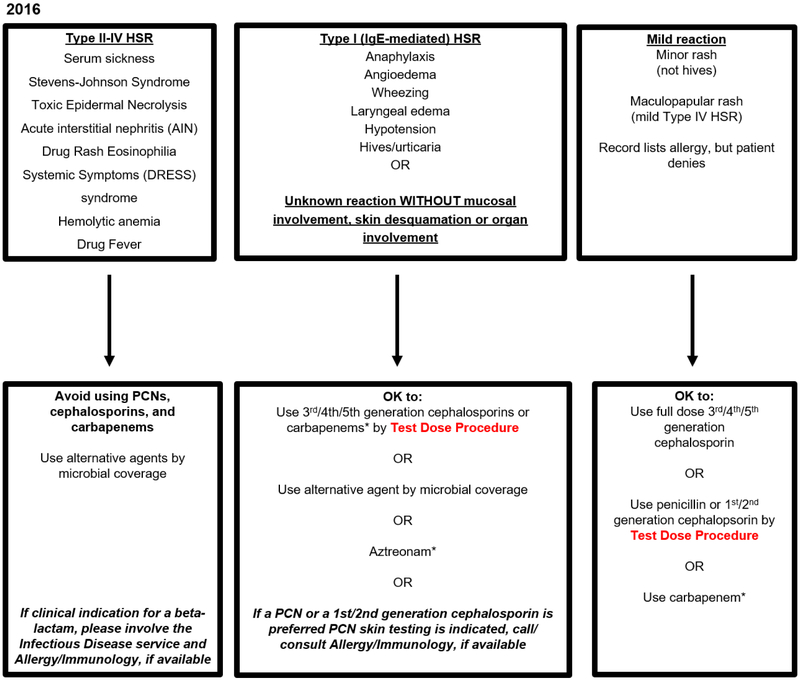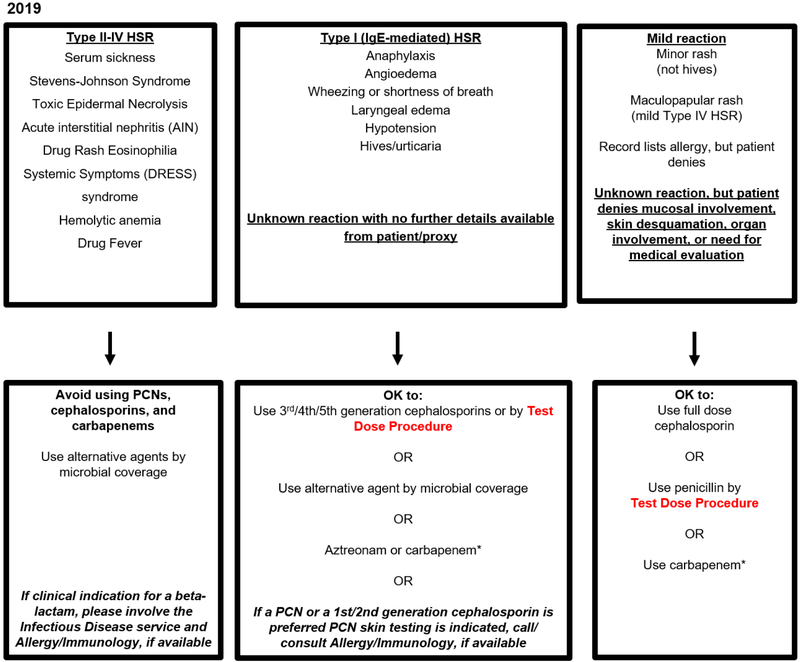Figure 1.
Partners HealthCare System (PHS) Penicillin Hypersensitivity Pathway (Boston, MA, USA) 30,32,33-35
This penicillin allergy pathway algorithm was originally developed at MGH, modified and studied at BWH, and further adapted for use at community hospital sites of PHS including two without access to Allergy/Immunology or PST (2016, Figure 1A). The algorithm considers actions based on the generalist’s allergy history considering three groups: (1) Type II-IV HSR, (2) Type I, IgE-mediated HSR or unknown reaction, and (3) Mild reactions. The pathway applied to all adult and pediatric patients, including pregnant patients, but test doses were not considered appropriate for patients with unstable cardiac or respiratory status. After evaluating HSR frequencies, additional modifications were made to further promote antibiotic stewardship. These changes included full dose carbapenem use in Type I IgE penicillin allergy histories and full dose cephalosporin use in all mild penicillin allergy histories (2019, Figure 1B). There is a corresponding cephalosporin hypersensitivity pathway algorithm. Abbreviations: PHS, Partners HealthCare System; MGH, Massachusetts General Hospital; BWH, Brigham and Women’s Hospital; PST, Penicillin Skin Test; HSR, hypersensitivity reaction; PCN, penicillin
* Denotes antibiotics restricted by antibiotic stewardship programs at PHS sites


